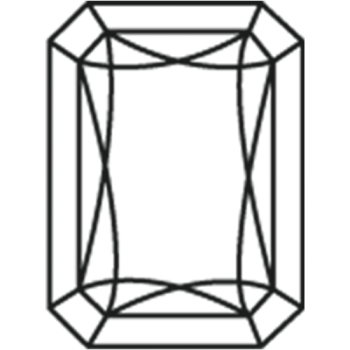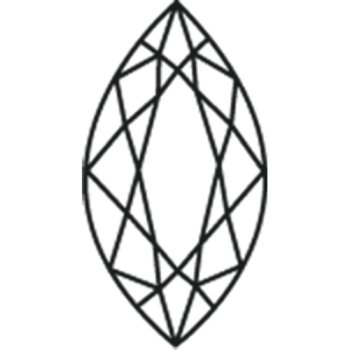DIAMOND TESTING - HOW TO TELL IF A DIAMOND IS REAL?

The easiest way to tell if a diamond is real, when buying diamond jewelry, is to look for an authentic certification like GIA or AGS. These certifications are issued after expert gemologists evaluate the diamonds with advanced laboratory instruments.But there are some basic tests or checks that you can perform. The first step is to define what you consider fake. It is important to know what's real, fake, synthetic, or simulated before you start to think of testing a diamond. Remember that lab-made diamonds are not fake. A fake diamond is one that is made up of a material other than pure carbon crystals. It is hard to distinguish one material from another just by looking at it. Fake diamonds are usually made of Cubic Zirconia (similar name, different metal to make it all the more confusing), Moissanite, White Sapphire, Rutile, Spinel, synthetic garnet, even glass. These materials look similar to the naked eyes, especially to an amateur who is browsing through engagement rings for the very first time.
11 Things you need to check
A LITTLE BIT ABOUT NATURAL DIAMONDS
A diamond can be synthetic but not fake. Natural diamonds are extracted from the depths of the earth where scorching temperatures harden carbon compounds to give the chemical characteristics typical of a diamond. After the ore is extracted, it is cut and polished into the diamonds that you see at shops. Bear in mind that a real diamond goes through several cutting and refining processes only to be assessed and graded by experts. Even after this rigorous treatment, a real diamond will maintain its chemical properties like level 10 hardness on the Mohs scale, isometric structure, and color grading according to its natural form.
WHAT IS A SYNTHETIC DIAMOND
Synthetic or lab made diamonds are made of the same material but they do not go through the natural process. Instead, they are created in labs. Thus, it isn’t classified as fake but as synthetic, cultured, or laboratory-grown diamond. These diamonds are obviously cheaper than the real ones. Diamond simulants or fake diamonds are made of other materials. And while they can look a little like diamonds, they are easy to distinguish. Now that we have all the terms cleared out, let’s see how one can test which piece of jewelry is made of real diamonds and which one is not.
SEND YOUR DIAMOND JEWELRY TO THE LAB FOR EXPERT OPINION
Before we start talking about DIY methods, it is worth mentioning that only an expert can evaluate the diamond's quality and authenticity. If you want your diamond jewelry to be thoroughly inspected, you will have to go to some local diamond jewelry store. The professionals have specific devices like high sensitivity weighing machines, high-yield microscopes, combination diamond/moissanite testing, thermal probes, and electrical conductors that are designed to test specific chemical and physical properties in a safe environment.
FOG TEST
Every day, new trends and styles are emerging. Necklaces with two names are among the hottest trends. You can give these as a gift to your best friend or loved one. A heart is often included as a symbol of everlasting love on these necklaces. Different accents, metals, gems, and other customizations can be added to 3D name necklaces. Personalized jewelry is a beautiful way to celebrate special moments. The Arabic name necklaces we offer are reasonably priced and make great gifts for parties, anniversaries, engagements, and other occasions.
WATER TEST
Yet another test is to drop the diamond into a glass full of water. Real diamonds sink due to their high density. This test should be performed on loose diamonds only. Do not use this test for a piece of jewelry because water can spoil any other metal or material used in the jewelry.
SCINTILLATIONS
These are typical of a brilliant-cut diamond. The light going through the diamond goes through internal refractions. This dispersion of light causes the white light to split into seven colors, commonly known as prismatic fire and light flashes. Hold a magnifying glass to get a better idea. Do not worry if your emerald, rose, heart and Asscher-cut diamonds don’t emanate this brilliance since they are cut differently and tend to reflect light more.
LOUPE AND MAGNIFYING GLASS
These are easily available devices that will help you access the refractory surfaces, inclusions, and shadows in diamonds. Although an amateur may not be able to promptly classify or detect these – they are still important clues for someone who is just looking for a confirmation.
REFRACTION TEST
These are done through the dot and newspaper. Diamonds typically refract light instead of reflecting it. This bending of light will make it impossible for you to read a newspaper through a diamond’s surface or make a dot underneath it visible. A fake diamond, through its reflective surfaces, will still allow some form of visibility.
X-RAYS AND UV LIGHT
Diamonds are radiopaque, which means they are seen as solid white structures. They also depict a typical blue fluorescence under UV light. Although higher grade diamonds show minimal blue fluorescence.
CHECK THE MOUNT AND SETTING
Most tones made from different materials have labels engraved on the inside of the ring. Find out about the symbols to identify whether it is a fake or real diamond. Moreover, real diamonds need sturdy metals to hold them and prevent wear and tear. If the metal is cheap or fake, there is a higher probability that the diamond is not real.
BUY CERTIFIED DIAMONDS
It is better to be safe than sorry. Always purchase diamonds with a certificate from the GIA or some other certifying organization – this will save you from the trouble of getting them tested and valued later.





















